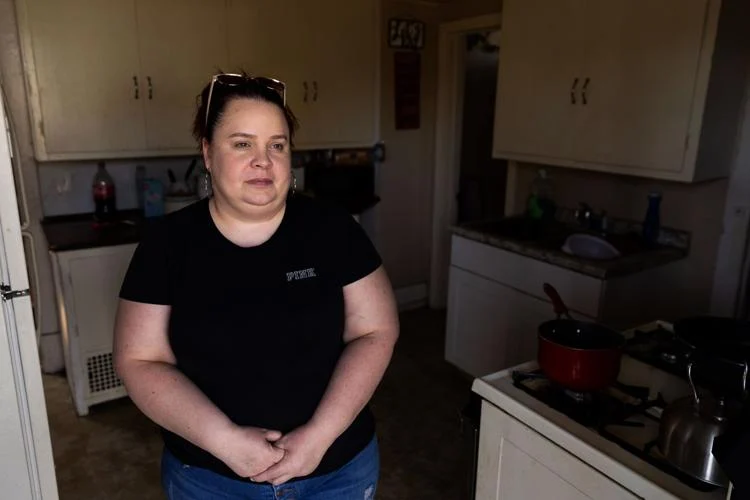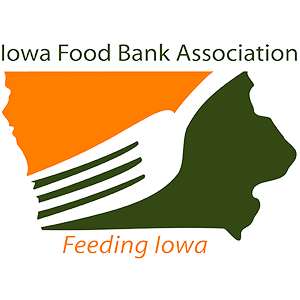This article ran in the Omaha World-Herald on Monday, April 1st. To view the story on Omaha. com, click here.
Megan Degante—an Omaha mom of two teenage boys, says she understands how hard it is for children in rural areas to access food programs, compared to urban settings.
As food insecurity rises in Nebraska, nonprofits and school districts across the state are preparing to feed hungry children this summer using a federally funded meal program and food benefit cards that will be used by families to purchase groceries.
But the loss of pandemic-era federal money leaves food banks and advocates looking for volunteers and donations to help prevent hunger, especially in the state’s vast rural areas where people have fewer grocery stores and where children may not have an available meal nearby.
“Food insecurity in Nebraska over the last five years went from 10.8% of households in 2017 to more than 12% of households in 2022,” said Stephanie Sullivan, a spokesperson for Omaha-based Food Bank for the Heartland, citing federal statistics. The food bank works in 93 counties in Nebraska and western Iowa.
“Summer can be a challenging time not just for families but for children especially,” she said, noting that having more kids at home all day can place a strain on budgets and area food pantries. “We’re dealing with a hunger crisis we’ve not yet seen in our history.”
Nebraska’s food insecurity rate of 12.2% surpasses the national average of 11.2%, according to an October 2023 study by the U.S. Department of Agriculture. The department funds a Summer Food Service Program for eligible children nationally.
Urban areas have many more summer meal sites.
Feeding America breaks down the food insecurity rate for children by county. Urban areas of the state had many summer meal sites while some rural areas did not.
In Douglas County, for example, the food insecurity rate for children was 12.9%, according to the 2021 data. The county, home to Omaha, had nearly 80 summer meal sites in 2023.
That’s not the case in some more rural areas. Madison County’s food insecurity rate for children was close to 12 percent, for example, but it had just one summer meal site.
Different counties may have different needs, given their populations — Douglas County is Nebraska’s most populous — and their geography — Madison County spans nearly 600 square miles and Lancaster encompasses more than 800 square miles, far larger than Douglas.
The summer meal locations for this year are currently being finalized and will be available on USDA’s website in early May.
Sullivan said Food Bank for the Heartland anticipates serving more than 1.6 million people in its 2024 fiscal year, up from 1.3 million prior to the COVID-19 pandemic. A variety of federal pandemic-era programs have ended, but food insecurity levels aren’t back at pre-pandemic levels, she said.
Child hunger has been a major topic in the state after Gov. Jim Pillen initially declined about $18 million in federal funding from the Department of Agriculture’s Summer Electronic Benefits Program, which provides EBT cards, an electronic food benefit system, to low-income families of $40 a month per child or $120 for the summer. After pressure from the public and some lawmakers, Pillen changed course in February and said Nebraska would accept the money.
Food banks and school officials praised his decision, leading to hope that more than a dozen Republican governors in other states would follow his lead.
Aside from the summer meal program and EBT cards, Food Bank for the Heartland runs several other programs to provide nutritious meals to children in the Omaha metro area. But “there’s thousands and thousands of children that we’re missing across our state. And that’s why the summer EBT program is so beneficial,” Sullivan said.
What about these kids in small towns?
Concern for rural areas is part of why Meghan Degante, a single mother with two boys in high school in Omaha, signed a petition from the Lincoln-based group Nebraska Appleseed encouraging Pillen to accept the EBT program funds. Degante said in an interview that she knows how challenging it is to provide meals for children and worries about those who don’t have access to the kinds of resources Omaha has.
One of her sons was diagnosed with ulcerative colitis a few years ago, she said, and caring for him and taking him to appointments while working in daycare made it difficult to provide meals. She has relied on federal EBT cards for help.
“I have teenage boys. My boys eat a lot of food because they’re growing,” said Degante, who earns $12 an hour at her job. As little as $40 a month in help can go a long way, she said.
Even with rising utility bills, “I’m able to manage.” But she said she worries others cannot.
She remembers growing up in a small town in southwest Iowa’s Fremont County.
“What about these kids in small towns?” she said. For the second year, the USDA’s summer meal program won’t just be for children to eat on-site. A family or parent can pick up one to seven meals for a child at certain rural locations, and some districts have the option of doing deliveries or a bus route, said Eric Savaiano, a program manager at Nebraska Appleseed.
Increased need in Grand Island, Panhandle
In central Nebraska’s Grand Island, school officials said they’re seeing a growing need for food assistance and said the summer meal program and EBT cards are a huge help.
Oscar Garcia, the nutrition services supervisor with Grand Island Public Schools, said the district operated five public meal sites for children last summer. But this summer, they’ll be adding a sixth one west of U.S. 281 because of increased need.
“This is the very first year that I’m aware of that we’ve had a school on the west side of our town that has hit the 50% mark for free and reduced” lunch, Garcia said. The district served 600 to 800 meals a day in summer 2023.
In rural Kimball County on the border with Wyoming and Colorado, about 50 miles south of Scottsbluff, the county school district has operated a summer meal site for about 12 years.
More than half of students in the community qualify for free or reduced lunch during the school year, so “we do have a significant need in our community,” said Danessa Terrill, the school district’s food service director.
In Gering, Nebraska, the school district opened two summer meal sites for the public in 2023 and served students at three additional schools. They’ll host the same sites this year, said Stacy Rodriguez, finance director for Gering Public Schools.
A really engaged community helps.
Officials at food banks and groups that help provide meals often rely on volunteers and say they’re always in need of more.
Brenda Sale, a nutrition educator with Nebraska Extension, said that when she began working at the extension office about 23 years ago, two schools in South Sioux City qualified for free or reduced lunch, but now every school qualifies. Dakota City, Nebraska, has a Dollar General store but no grocery store, she said.
Nebraska Extension’s Voices for Food program in Dakota County relies in part on volunteers who grow extra produce in their gardens and donate it to a hub at the Siouxland Community Health Center, where it can be refrigerated. Sale is the coordinator for the project, which also provides produce at food pantries, senior centers and apartments through grant-funded gardens.
“We have a really engaged group and really engaged community that just cares,” Sale said. “There’s always going to be kids that are struggling with hunger or food or finances, and it’s always just an effort to find people in the community that want to take it upon their shoulders to do something about it.”






